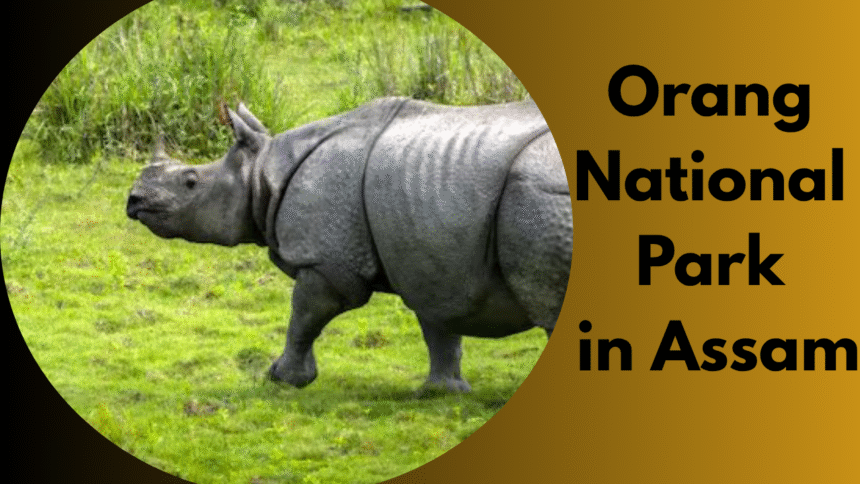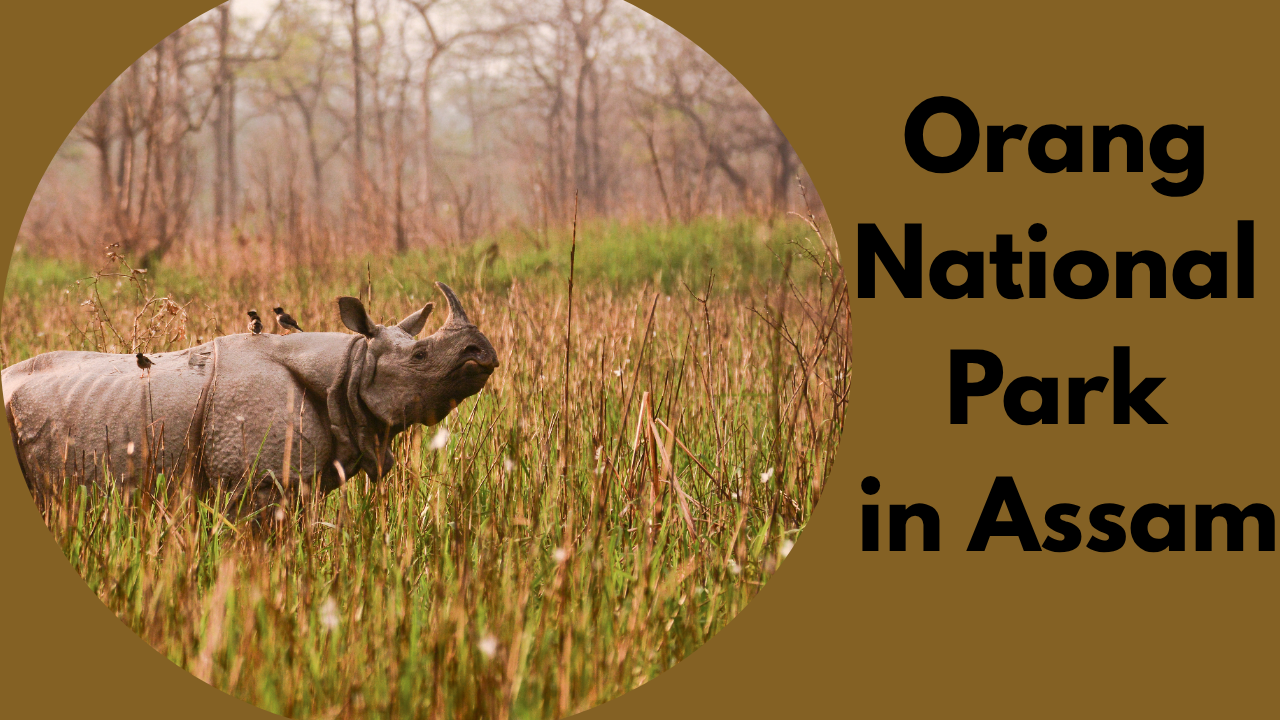When we think of Indian wildlife destinations, names like Kaziranga or Jim Corbett often come to mind. But tucked away quietly in the northeastern state of Assam lies a lesser-known paradise —Orang National Park in Assam. Often called the “Mini Kaziranga,” this hidden jewel offers wild beauty, rich biodiversity, and a peaceful escape from the crowds. If you’re craving a more offbeat wildlife experience, Orang might just steal your heart.
Where Is Orang National Park Located?
Orang National Park in Assam sits on the northern banks of the mighty Brahmaputra River, in Assam’s Darrang and Sonitpur districts. It’s about 110 km from Guwahati, making it surprisingly accessible for travelers flying into Assam’s main airport.
Why Is Orang Called the ‘Mini Kaziranga’?
You might wonder, what’s behind this nickname? Well, both Orang and Kaziranga share similar terrain floodplains, swamps, and tall grasslands. They’re also home to some of the same iconic wildlife, like the great Indian one-horned rhinoceros. But what sets Orang apart is its tranquility and intimacy. While Kaziranga is world-famous and often crowded, Orang offers a more personal, undisturbed experience.
A Peek Into Its History
Established as a wildlife sanctuary in 1985, Orang National Park in Assam was declared a national park in 1999. Though smaller in size around 78.81 sq. km it plays a critical role in preserving Assam’s unique floodplain ecosystem. Its name, “Orang,” comes from the Orang tribe that once inhabited this region.
Wildlife You Can Spot in Orang National Park
For such a compact park, Orang National Park in Assam packs a punch. Here’s what you might encounter on a safari:
One-Horned Rhinos: The park is a stronghold for this majestic, endangered species.
Royal Bengal Tigers: Yes, tigers roam here and Orang actually has one of the highest density tiger populations per square km in India.
Elephants: Large herds of wild elephants are common, especially during winter.
Leopards, wild boars, and civets: Keep your camera ready you never know who’ll show up.
Dolphins: The nearby Brahmaputra River hosts the endangered Gangetic river dolphin.
Birdwatcher’s Paradise
If you’re a bird lover, Orang is going to feel like heaven. It’s home to over 200 species of birds, including:
Greater Adjutant Stork
Indian Pelican
White-winged Duck
Pallas’s Fish Eagle
Bengal Florican (critically endangered)
Winter is the best time to witness flocks of migratory birds painting the skies with their vibrant colors.
Best Time to Visit Orang National Park
The park is open from November to April, which is when the weather is pleasant and the animals are more active. Monsoons, while beautiful, make the terrain muddy and the park is usually closed from May to October.
Professional advice: Plan your trip from December to February and plan your best chances to discover the cleanest heavens and wildlife.
How to explore oranges: Jeep Safari
The best way to test oranges is in Jeep Safari. These safaris enter the heart of the park. There you can stand there without disturbing the fauna. Unlike the larger parks, the safari here is calm, more personal and feels less touristy. If you’re an adventure, exploring the adjacent Brahmaportur by boat is just as magical, especially if you’re hoping to see the elusive dolphins on the river.
Where to stay next to Orange National Park
Placement options around the orange area are always limited. This is actually part of its appeal. Some eco lodges, forest guesthouses and homes are available in nearby cities, such as Tezpur and Decyjuli. These places often offer local cuisine, warm hospitality and breathtaking views of Assam’s village.
Why does Orange pay more attention?
Orang National Park in Assam resembles this underrated independent film that never hit the dominant currents, but left an indelible impression. It’s wild, but calm, far away, but worthy and full of natural beauty. For travelers who want to avoid ordinary safaris and communicate with nature on a deeper level, Orange offers just that. It’s not only a matter of marking faunas from the control list, but a way to plunge into the rhythm of nature far from the noise of urban life.
Orange Ecotourism and Preservation
One of the happiest aspects of orange growth is its focus on sustainable tourism. Park management, community and nature defenders work together to protect habitat, with local residents involved in the tourism game model that benefits nature and people. When you visit Orange, you are not only contributing to studying wildlife, but also to your efforts to maintain your community.
Read More: Wholesome Indulgence: Creamy Millet Kheer Recipe for Healthy Sweet Cravings
Conclusion
If you’re a road lover, then less travelling, Orang National Park in Assam is your place. It’s raw, authentic and refreshing. There are rhinos falling on a golden pasture, dancing with sunscreen and tigers, filled with birds quietly hiding in the shade, and oranga provide the wilderness. So why wait until he becomes a trend for the next long journey? Collect your bags, bring your binoculars and experience Assam’s most persuasive secrets before the world takes over itself.









